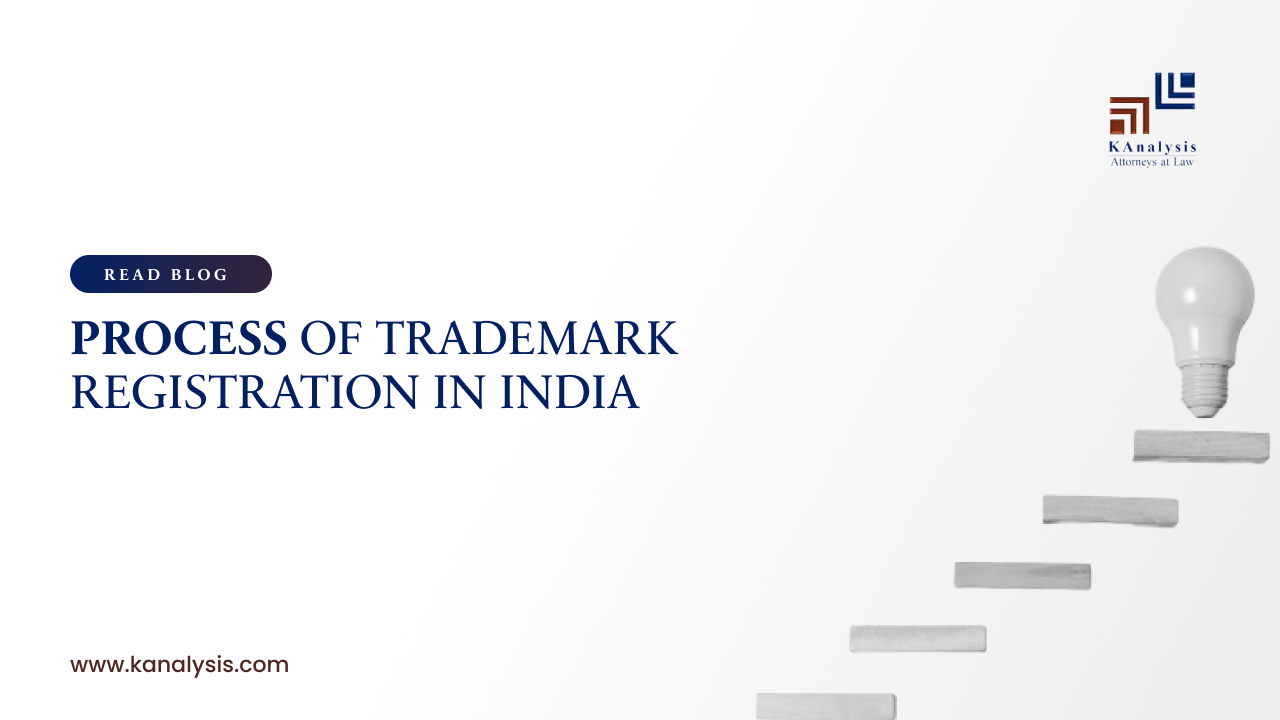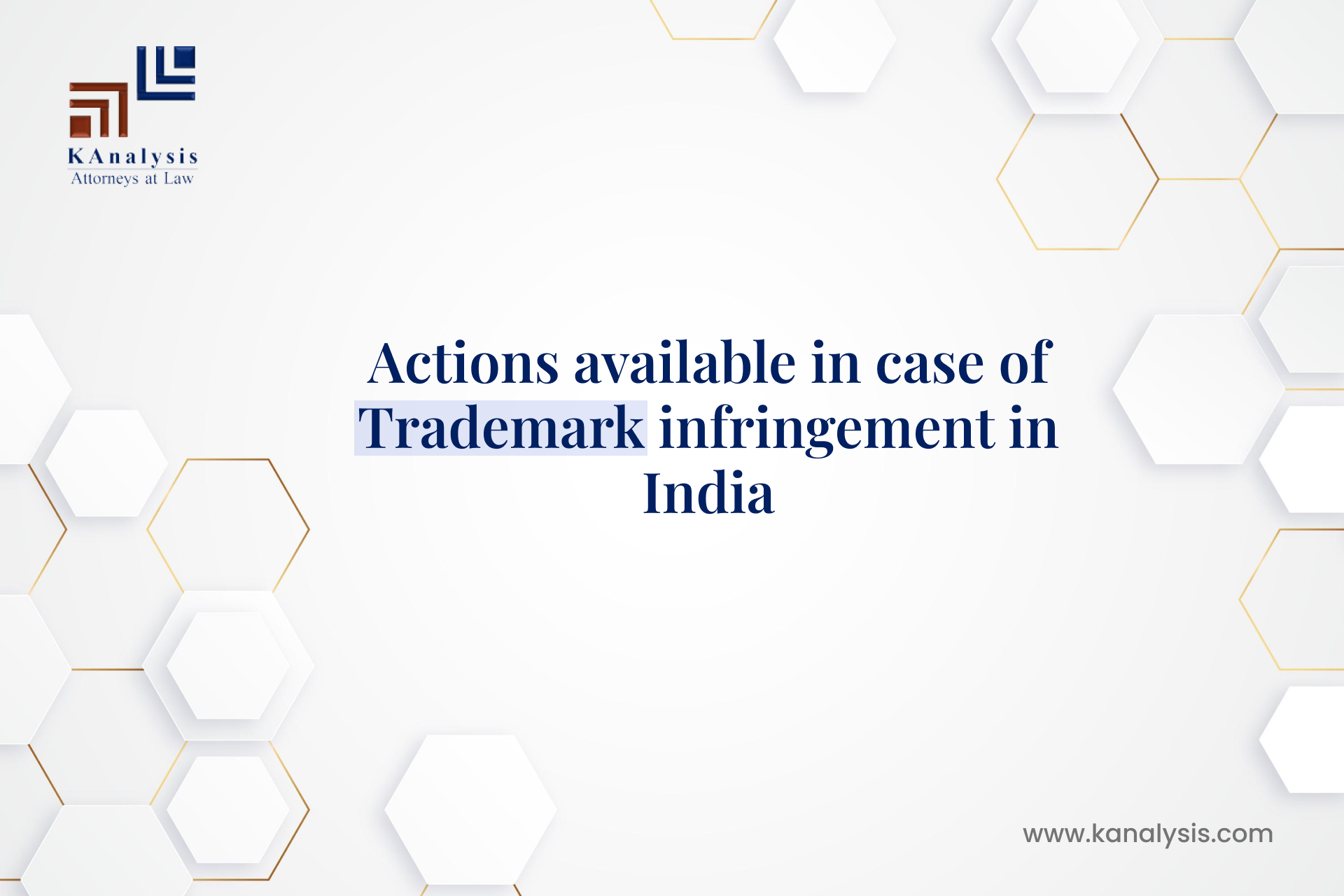The first thing a consumer notices before making any purchase is a brand’s name or logo in order to recognize the product and trust the quality. In order to make this recognition more convenient, a trademark registration is essential. Hence, a trademark is a business’s most valuable asset and gives the organisation structure and legal protection.
STEPS OF TRADEMARK REGISTRATION

Step 1: Trademark Clearance Search
The most fundamental step before starting the filling process is the trademark search where it is essential to rule out any objections that can be raised with respect to the similarity in the marks. This phase entails investigation to determine if a trademark or logo for the same or a related class of products or services has already been filed or registered in the past. The search can be basic or compressive such as clearance search, INN search, domain name search, etc. in order to cover all the aspects. A mark should be unique, if an entity needs to get its mark registered, which can be traced via trademark search. We have covered in detail the importance of conducting trademark search before filing here.
Step 2: Trademark Filling
Another step in registering a trademark is submitting an application to one of India’s five trade mark offices, which are located in Delhi, Mumbai, Kolkata, Chennai, and Ahmedabad. The Trademark Rules, 2017[1] u/r 10 and 11 deals with the regulations governing filing of fees and forms for the purpose of Trademark prosecution in India. The fees for start ups or MSME’s for registering a trademark in India in one class is Rs. 5000/- for physical filing and Rs. 4500/- for online filing.
Step 3: Examination and Generation of Examination Report
Within three to four months of receiving the trademark application, the trademark office issues an examination report. Either the application is approved or an objection is recorded in this report. According to Sections 9 and 11 of the Trademark Act, 1970 objections are typically made based on similarities between trademark applications, the generality and lack of distinctiveness of the trademarks, and other factors. Such objections may vary on case to case basis on different grounds.
In order to avoid the application being abandoned, the reply to this objection must be sent within 30 days after receiving the examination report. The trade mark Registry then determines whether it is possible to move on with the application or if more clarifications are required after the reply is filed. If more information is needed, the Trademarks Registry may schedule a hearing to allow applicants to respond to the objections personally.
Step 4: Publication
One of the most essential steps in the prosecution stage is publication or the advertisement of the mark in the trademark journal. The Examiner will accept the mark and issue a directive for publication of the mark in the Trademark Journal if he is satisfied with the arguments presented in the preceding phase. The step of publishing is incorporated into the trademark registration procedure to give anyone the opportunity to oppose to the trademark’s registration.
Step 4: Opposition
After the publication, any person aggrieved by the mark can oppose the registration on various grounds such as mark not being of distinctive nature or likelihood to deceive public or cause confusion, etc. The opposition stage follows the following process:
1. Notice of Opposition: Any person or entity can file for a notice of opposition with the trademark registry mentioning their objections such as prior user or prior registered mark, etc. within 4 months from the date of publication.
2. Counter Statement: Thereafter, within two months of receiving a Notice of Opposition, the Applicant of the concerned Mark may submit a counterstatement along with form TM O. The mark’s registration will be presumed to have been abandoned if the applicant doesn’t submit the counter statement, after which it will be removed from the Trademark Journal.
3. Evidence in Support of Opposition: The Opponent must submit proof of his opposition in the form of an affidavit within a period of two months. Also, in this allotted period, the opponent must update the Registry and the Applicant, else, the opposition will be believed to have been abandoned.
4. Evidence in Support of Application: When the opposing party files evidence in support of his opposition, the applicant may, if necessary, file evidence in support of the trade mark application within 2 months.
5. Filing Evidence in Reply: After receiving evidence in support of the application, the opposition has one month to file an application to introduce new evidence. The opposition proceeding ends at this point and at this juncture neither party is allowed to present any additional evidence, unless the Registrar deems it necessary at his or her discretion, subject to cost and terms.
The opposition proceeding then moves to the hearing stage, where the Registrar will decide whether or not to register the trademark after hearing both parties and considering the provided evidence. If the opposition argument is rejected, the trademark goes forward for registration; if it is approved, the trademark registration is rejected.
Step 5: Registration Certificate
Once an application is examined and opposition plea is rejected or is unopposed after the completion of 120 days from its date of publication in the trademarks Journal, the mark is registered and a certificate of registration is issued with the Trademark Office seal is issued. Once a trademark registration certificate is issued, the trademark is considered the owner’s registered trademark, allowing the owner to use the trademark entirely. The ® symbol can now be used next to a registered trademark.
Step 6: Renewal
Once the trademark is registered in India, it has to be renewed perpetually every ten years upon paying the prescribed fee. The registrar of trademark reminds you of expiry of trademark before 6 months of it to make you renew it. The renewal is necessary as it prevents the infringement of the trademark and also provide for restitution in case of infringements. Unless it is renewed, it will be removed from the Register of Trademarks.
ESSENTIAL DOCUMENTS REQUIRED
Before filling a trademark application an individual or entity shall ensure that it has the following documents:
- The particulars of the Applicant;
- The incorporation details in case of a company or details of partners in case of a partnership firm;
- Proof whether the applicant is an Individual, Start-up or a MSME and a certificate thereof (will help secure eligibility under various schemes and avail concession in application fees);
- Details of goods/services for which the trademark is in use or is proposed to be used;
- Image of the trademark in case it is a device mark;
- If a third party designed the logo, they must issue a no objection certificate, or NOC, stating that it was created exclusively for the company’s use.
- Priority details and documents in case the application is claiming priority from an earlier filed application in another country;
- Affidavits of use must be submitted with trademark applications that are filed based on prior use. This is provided in order to describe how the trademark has been used in connection with the class of goods or services for which registration is being requested. Together with the affidavit of use, the evidence supporting this use of the aforementioned trademark must be attached;
- The Power of Attorney signed by the authorized representative of the applicant authorising trademark agent/attorney to act and represent on behalf of the applicant.
[1] https://ipindia.gov.in/writereaddata/Portal/News/312_1_TRADE_MARKS_RULES_2017__English.pdf




